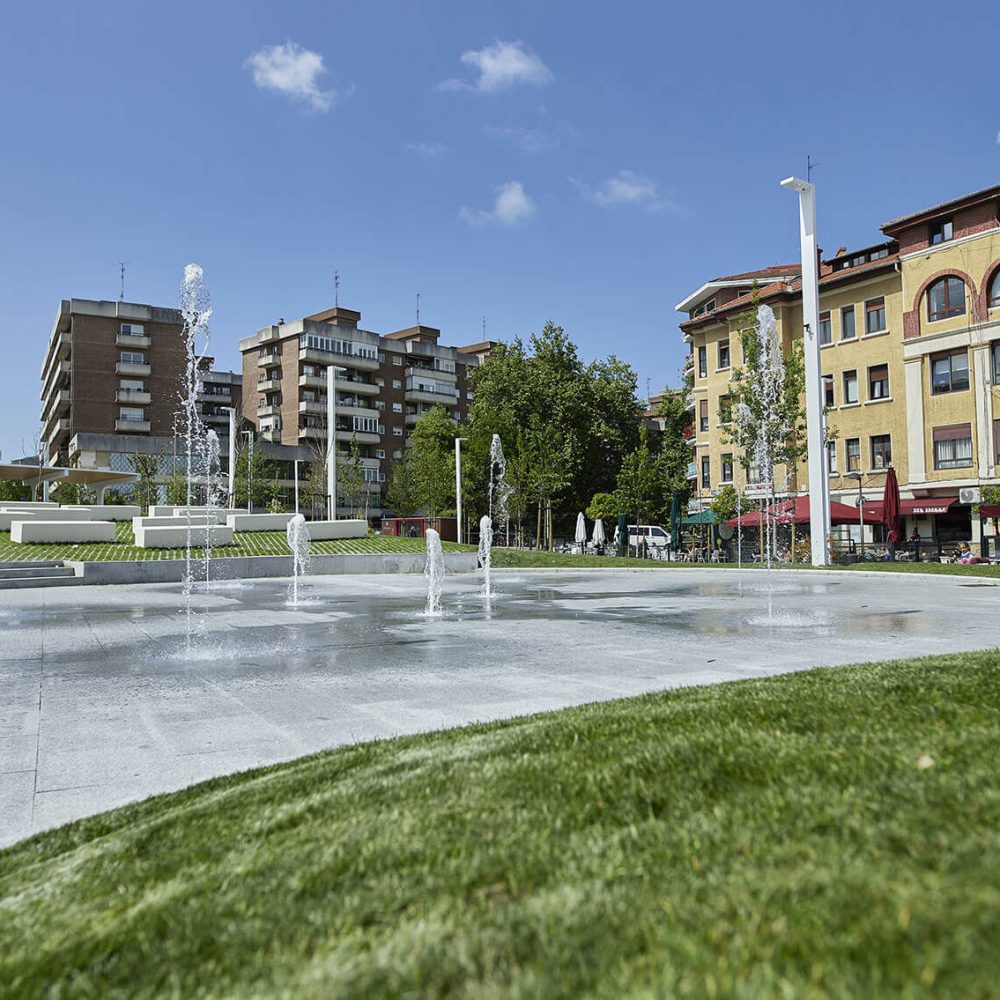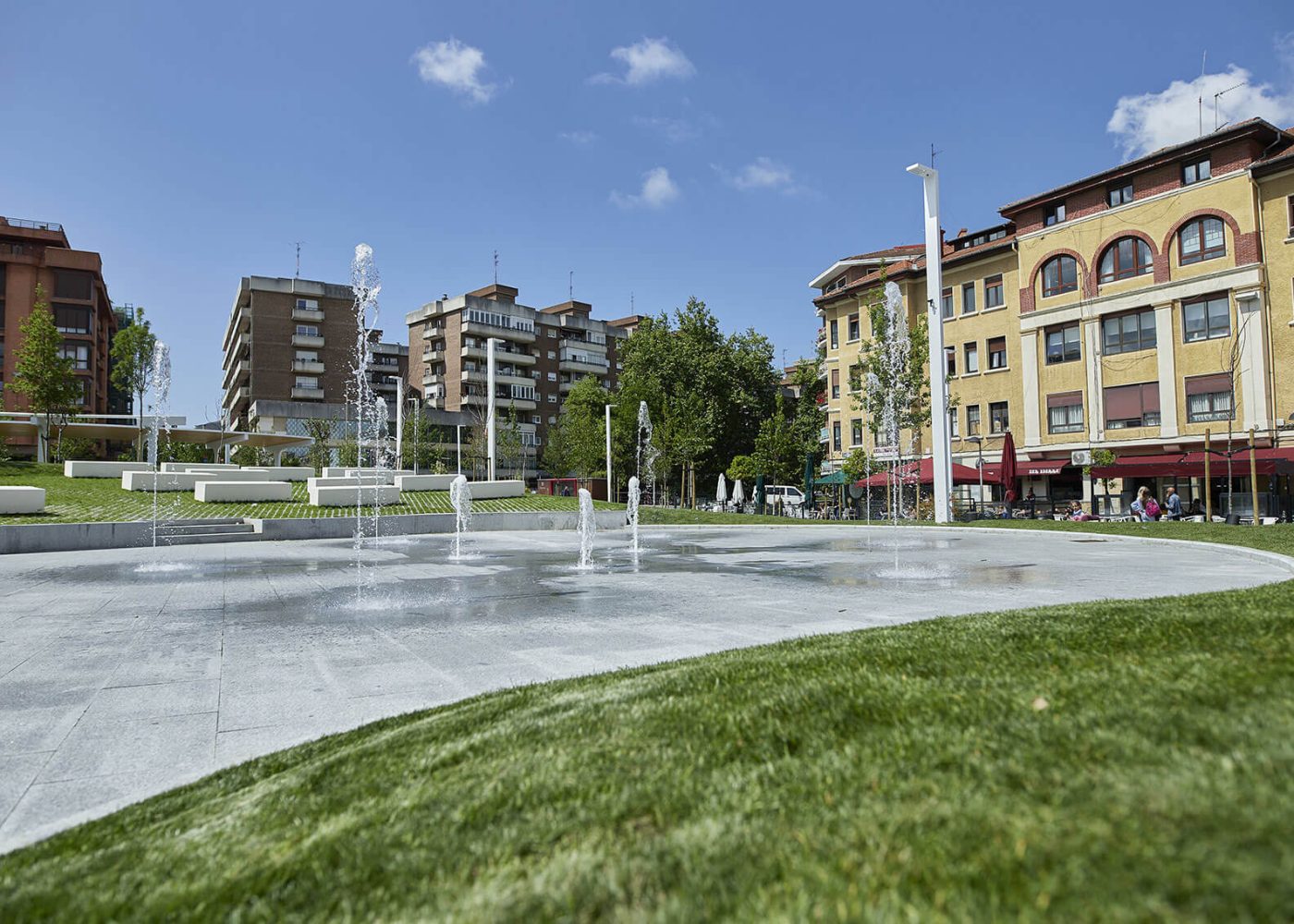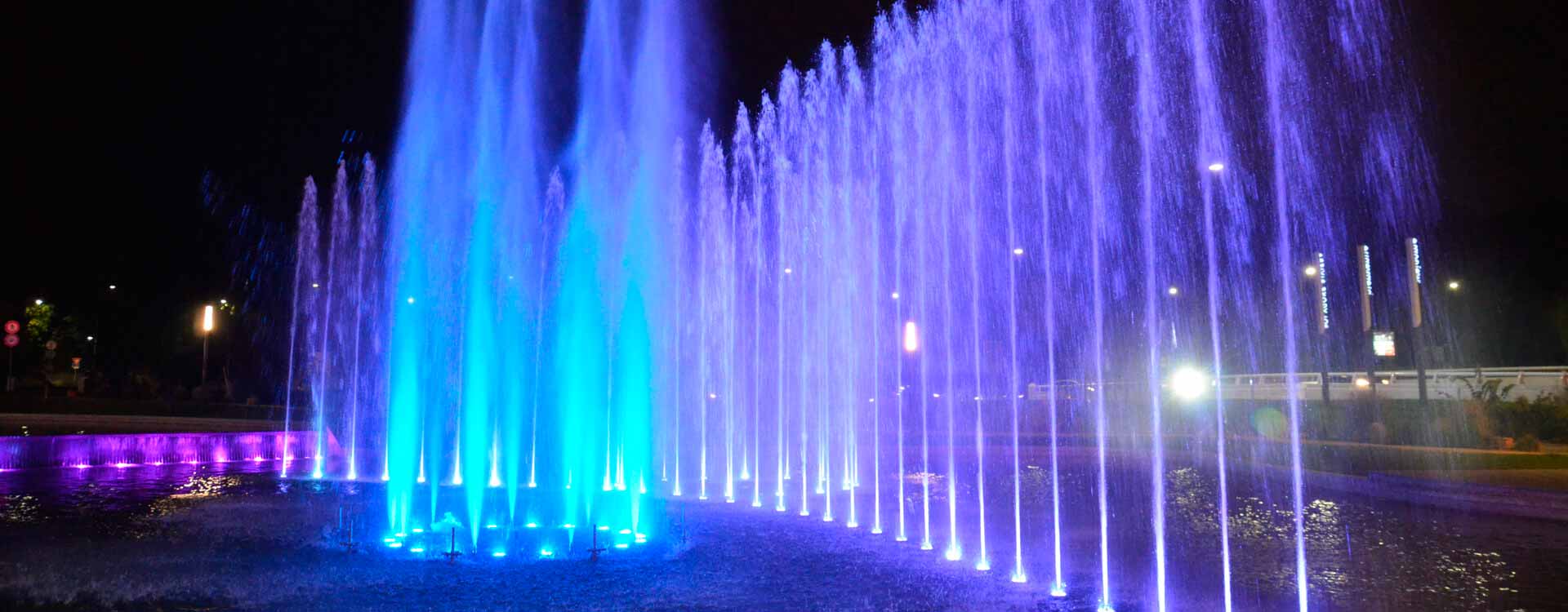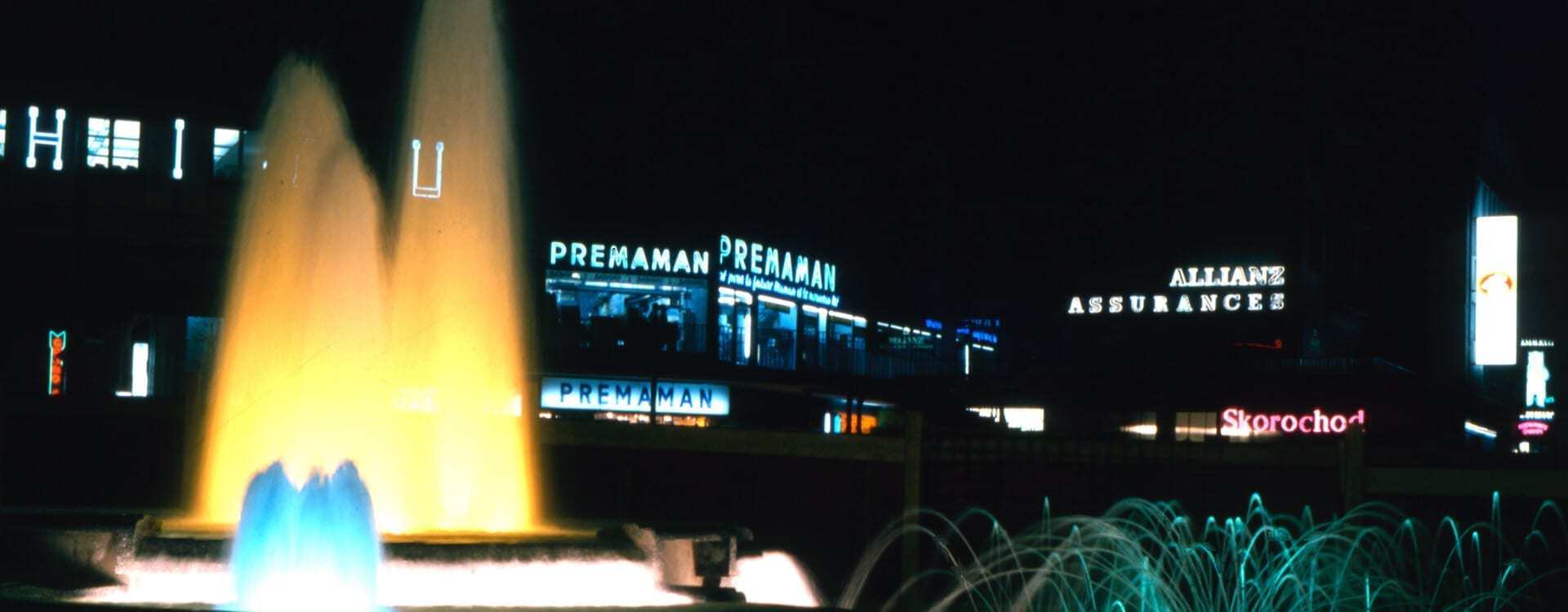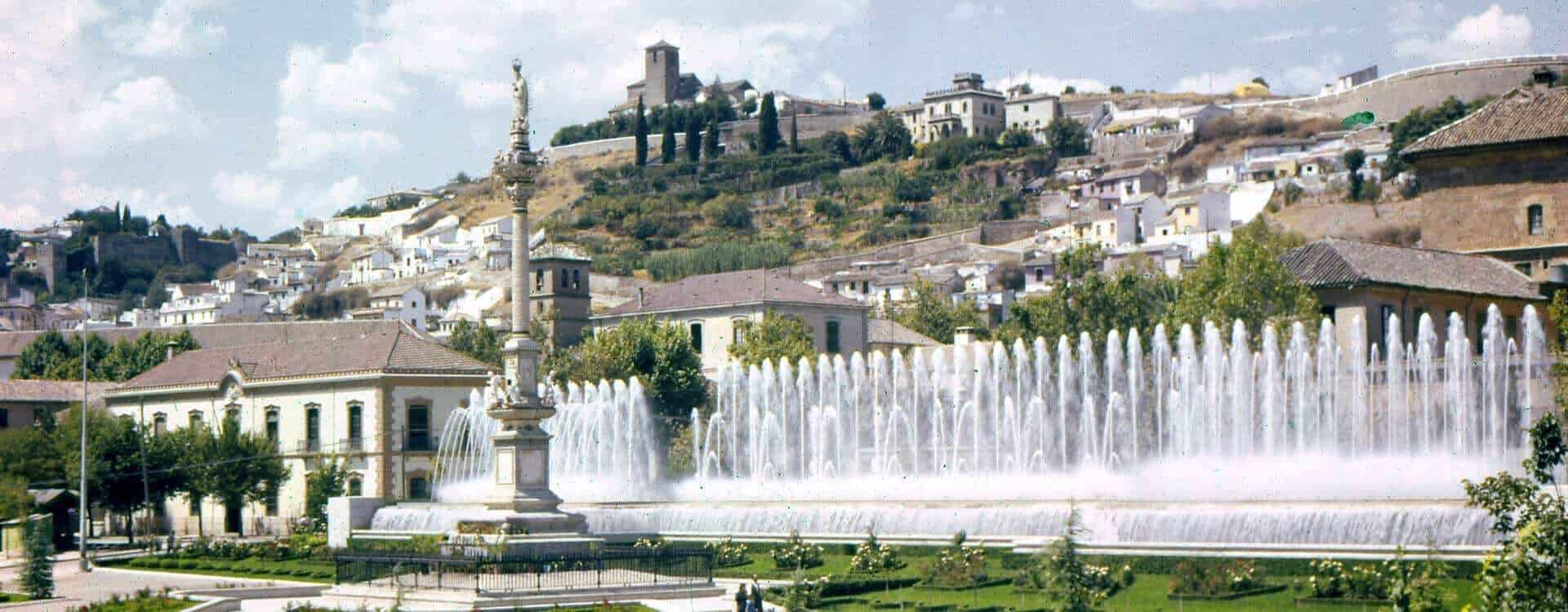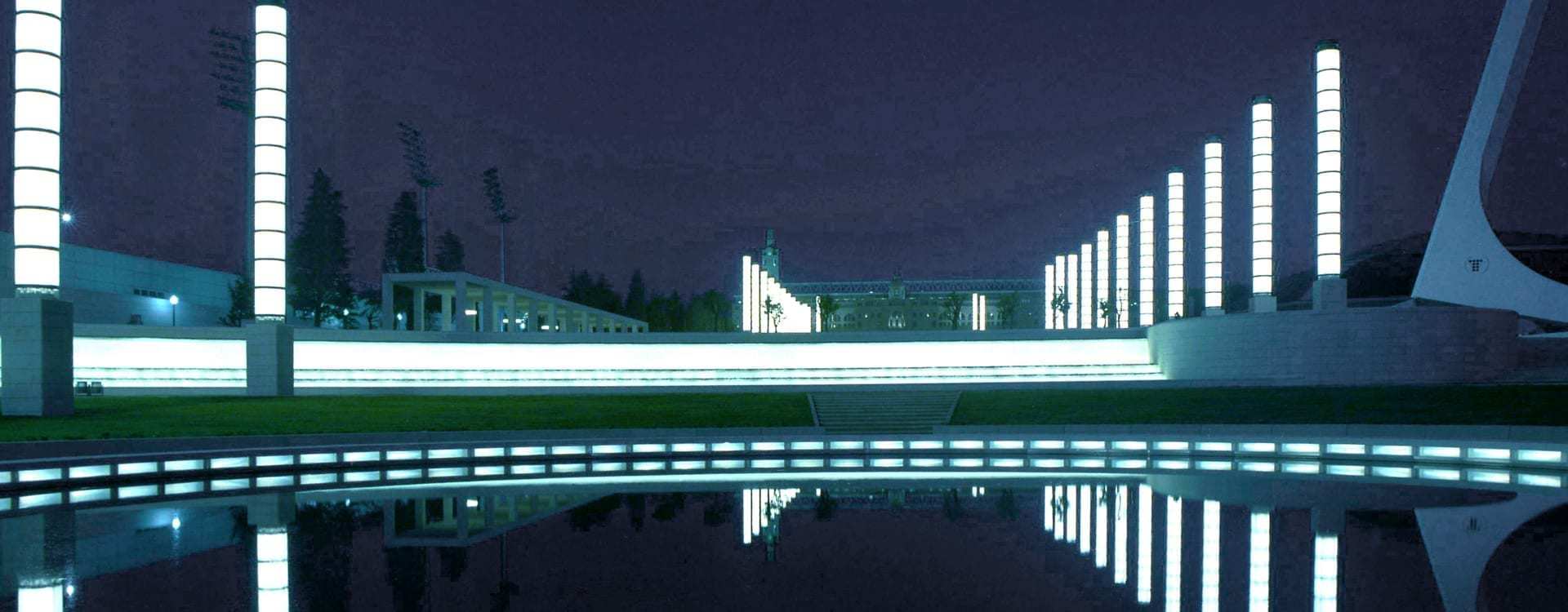Design
The space where the fountain was designed is a circular space with seating and green areas around it forming an amphitheatre.
The most appropriate fountain for the space was a walkable fountain, since, due to its configuration, it leaves an open space that allows the use of the space for other uses such as performances, concerts, or any other activity the city may need.
The fountain was designed in the shape of a flower, with six perimeter vertical jets as petals and three larger central jets that allow children to play with different forms of water.
Execution
The installation of the equipment and programming of the fountain effects took two months and included the following actions:
- Installation of hydraulic and electrical components:
- On-site installation redesign
- Manufacture of ad hoc measurement facilities required for the new fountain.
- Placement of pumps and variable and vertical pumps and dispensers in the chambers.
- Installation of the water treatment system.
- Installation of grids and LED spotlights in each dispenser.
- Assembly of the components in the technical room.
- Connection and commissioning:
- Connection of the systems to the electrical panel located in the technical room.
- Fountain programming using Syncroshow® control software.
- Programming of fountain components to activate according to time and weather conditions.
- Wind speed-dependent jet height adjustment using an anemometer.
- Checking the fountain status control in real time from any device with internet access.
- Testing and commissioning of the fountain after connection of all components.
Sustainability
At OTB, sustainability is a priority in all our projects. We use high quality and durable materials, such as stainless steel and IP68 materials, to reduce the need for frequent replacement, which in turn reduces resource consumption and environmental impact.
In addition, we focus on energy efficiency by using low-power LED bulbs and adjusting the installation to operate at the minimum power required without compromising performance. This reduces energy consumption and carbon emissions, generating long-term savings.
As for water, we implemented a treatment system that allows us to use it in a closed circuit, limiting its consumption and recirculating it instead of continuously disposing of it and maintaining its quality in optimal conditions. This minimises waste and reduces demand on water resources.
In short, at OTB we adopt sustainability criteria in the choice of materials, promote energy efficiency and manage water responsibly. These actions demonstrate our commitment to protecting the environment and optimising resources, contributing to a more sustainable future.

